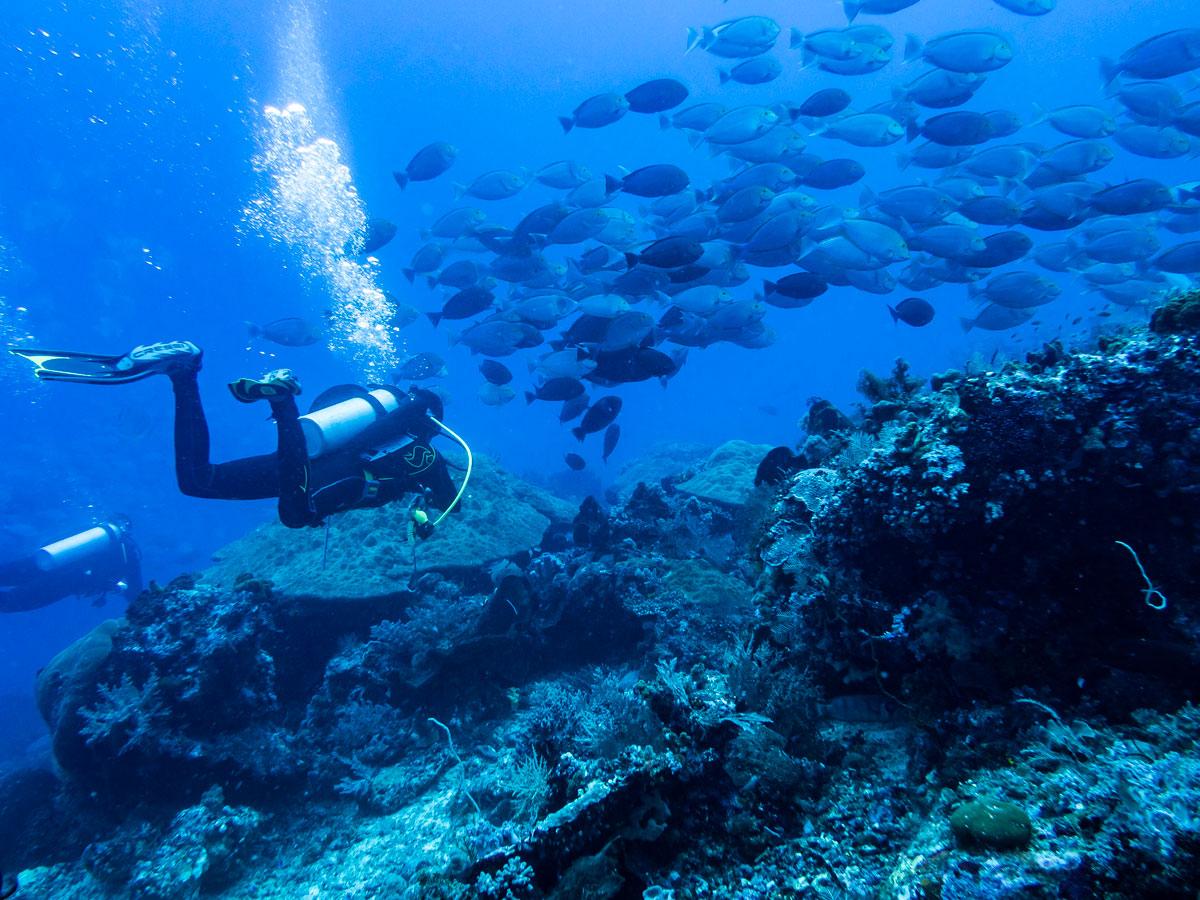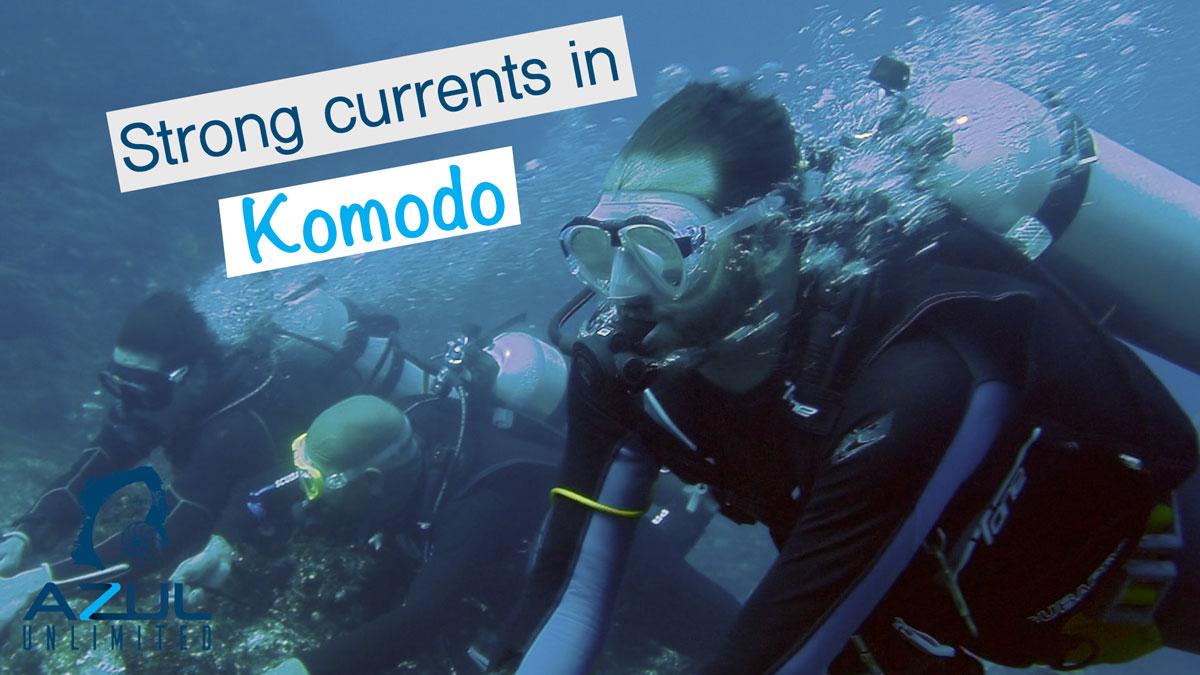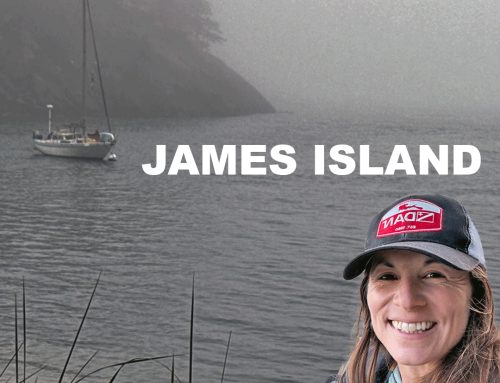When you hear about Komodo, the typical image that pops into your head is “the dragon.” For diving enthusiasts, however, the Komodo National Park means currents, sharks, beautiful reefs, marine life and biodiversity like nowhere else in the world.
Where do the currents come from?
Water, by nature, is in continuous movement. The tides are responsible for the movement of water around the world, and both the position of the moon and that of other stars influence this coming and going of water every 6 hours.
High tides to low tides
In general, in one day there are 4 well-defined tide points: two high tides and two low tides. This means that there will also be four points in which there will be no current (in English its called slack tide). The intensity of the tides (and in turn the currents) will depend on the difference in height between the tides. The greater the difference between high and low, or vice versa, the greater the intensity of the water movement. In general, in Komodo, the tides are more pronounced during the new moon and the full moon.
Another important factor is the topography of Komodo. There is a natural funnel formed by the islands of Komodo, Rinca, Padar and all the adjacent islands. Therefore, the waters between the Pacific Ocean and the Indian Ocean are in constant flow making it the perfect playground for one of the best dives in currents in the world.
The laziest form of diving you can find
Diving in currents can be done in many places in the world, but very few are as interesting as diving in Komodo. Here, all of the dives are considered drift dives. A drift dive is when the boat will drop the divers off in one point and will come back to pick them up at the end of the dive site after drifting along the reef.
In general, diving is promoted as a calm activity meaning that we should not get tired or exercise too much. Diving in a current allows divers to enjoy the views without having to even kick all that much. When descending it is best to get into dive position quickly and then the current leads the divers through the dive site.
Why choose to dive in strong currents?
The currents usually bring up nutrient-rich water through the dive site. Therefore, currents tend to mean lots of life because the animals show up to feed.
This is why the manta rays live in this area of the world!
In addition, certain animals such as sharks need currents to move and optimize their energy. Fun fact: some sharks are not able to rest on the seabed so they use the currents to stay suspended. Around here, however, you will find nurse sharks or white tips resting calmly on the reef. As such, diving in currents is interesting because you are able to see creatures that are attracted to that particular environment.
Tips & Techniques for diving in currents
If you did your Advanced Course and one of the adventure dives was diving in currents, you will be aware of the techniques to follow when diving in them.
The first thing to work on is good trim. Your position in the water must be as hydrodynamic as possible, that is, you must exert the least amount of resistance to water. In this way, you will control your position better and you will not go faster than the guide. If you take a ‘heads up’ position, your body will take up more surface area and you will move faster. Normally, there is no need to fin. The current will push you along gracefully and your fin kicks will be used to position yourself in the water.
In some dives in currents, you will have to adopt specific entry techniques, such as the negative entry. The negative entry is usually used in small diving spots (usually in pinnacles or small underwater mountains) where it is important not to stay long on the surface or otherwise the current will take you away from the dive site. Before jumping, you must completely empty your BCD, so as soon as you enter the water, you put yourself in the ‘head down’ position and start to descend quickly.
Start planning your next drift dive!
Diving in currents offers the possibility of enjoying dives in which you will be able to see special animals such as mantas and sharks, as well as large schools of fish that are on the lookout for their food. The dives in currents help you cover greater distances, perfect for exploring a large reef system. At the same time, the current make your dives less tiring since the current pushes you towards the exit point.
Come and enjoy the currents that Komodo offers throughout the year. Dive with mantas, sharks and get mesmerized by one of the healthiest reefs in the world.
We hope to see you here soon.
Greetings and Buen Azul!
Sergio Palazuelos León
PADI MSDT # 345513
Azul Unlimited
Enseñamos a buceadores responsables y protectores del océano. La marca está dirigida por la instructora del personal de PADI IDC, Sarah Valdez, quien enseña buceo en persona y en YouTube. Ahora viaja por los EEUU y México en su furgoneta buceando en lugares nuevos y diferentes. Sigue sus aventuras en YouTube, Instagram, Facebook y TikTok o únete a la comunidad de buceo Azul en Patreon.
Azul Unlimited está asociado con Azul Komodo, un centro PADI IDC en Labuan Bajo, Indonesia, que ofrece viajes de buceo diarios al Parque Nacional de Komodo. ¡Pónte en contacto directamente con su equipo para vivir una experiencia inolvidable buceando en uno de los mejores destinos de buceo del mundo!










